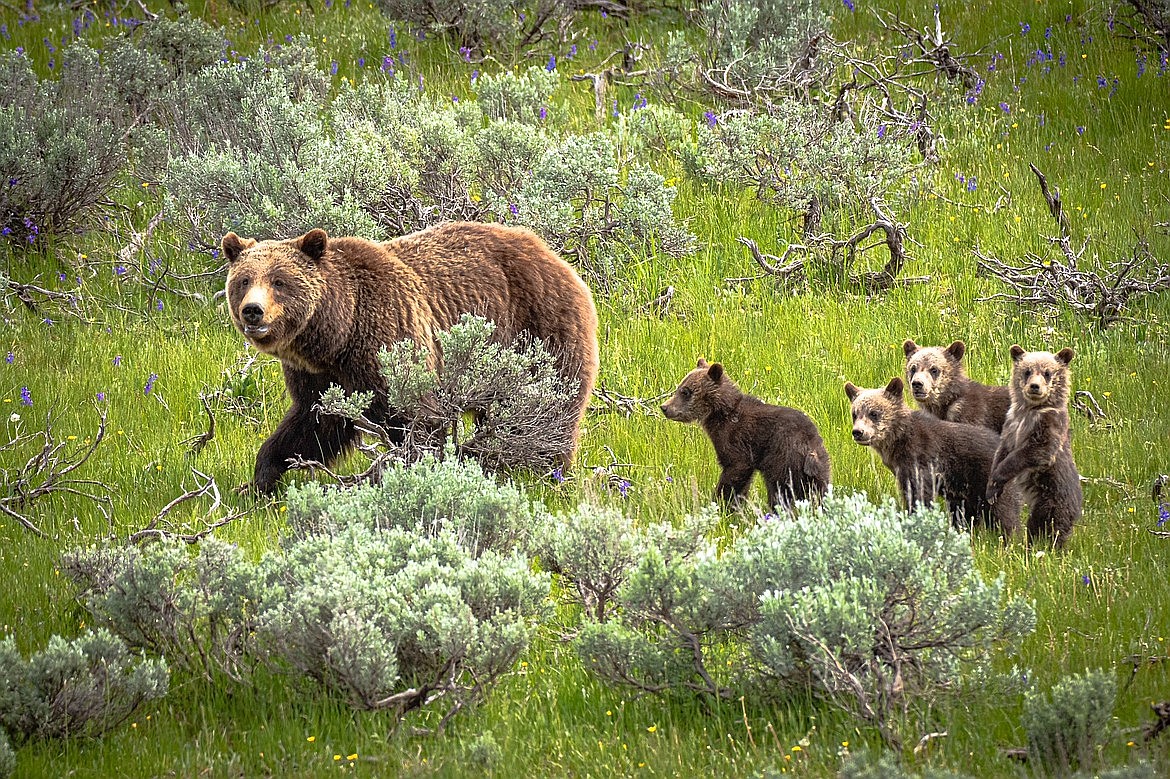Backcountry Bear Safety
As I stumble into camp for the night, my feet cry to be let free of the stinky boots they have been forced to call home for the past few days and nights. My eyelids beg to be closed for the night with each blink, and my head wants nothing more than to float off into a dream until morning. As I fight the urge to stumble off to my sleeping bag without properly setting up camp for the night, I know that I must gather my food and other scented items (i.e. sunscreen, chapstick, insect repellent), and ensure their safe, and responsible storage for the night.
For the safety of backpackers, hunters, and horse-packers alike, in addition to the safety of the bears with whom we share these mountains and valleys, it is critical that we work to keep human-wildlife interactions positive in the backcountry. One way in which we can work to keep -bears and other wildlife from forming “bad habits'' is to ensure they are not able to get into food or other attractants around camp. Of course, never feed or approach wildlife. If given easy access to such attractants, bears will often begin to revisit particular campsites to find a quick and easy meal and may learn to associate humans with food. While this may seem harmless at first glance, bears who make a habit of such behavior may find themselves creating potentially dangerous situations for both humans and the bears.
There are several effective methods of proper food and attractant storage which can be used to lessen the possibility of bears getting into your food in the backcountry. One of these methods is to pack a bear-resistant container (BRC) into the backcountry with you. BRCs come in all shapes and sizes, including hard-plastic canisters such as those produced by BearVault®, and bite-proof bags produced by Ursack®. In order to help consumers choose the right container for their particular needs, the Interagency Grizzly Bear Committee (IGBC) has put together a list of IGBC-certified Bear-Resistant Products (link provided at article’s end). Food or wild game can be also hung from a tree out of the reach of bears at least 10 feet above the ground and 4 feet out from the tree stem. While this is a great technique when conditions allow, be sure to keep your destination in mind when determining if a bear hang will be a suitable method for your trip. Certain destinations in the high-country may have stunted trees not large enough to properly execute a bear resistant hang. For large groups or stock parties, there are excellent roll out electric fencing options to deter bears that can enclose large quantities of food or even wild game during hunting season.
While all of these options can be effective at containing food and other attractants from bears, the specific areas in which you choose to recreate may have their own regulations on which containment methods are permitted. For example, if camping on the Flathead National Forest you are required to store your food and attractants in a bear-resistant manner, and can be written a ticket by law enforcement if you are not in compliance. To ensure that your backcountry party is keeping up with the bear safety measures of your area, contact the land managers of your intended destination to inquire about their rules and regulations surrounding bear-safe behavior.
IGBC-certified Bear-Resistant Products:
https://igbconline.org/wp-content/uploads/2021/10/210723_Certified_Products_List.pdf
To learn more about how you can promote human-bear coexistence, please visit Swan Valley Bear Resources online at www.swanvalleyconnections.org/swan-valley-bear-resources or give us a call at 406-754-3137

